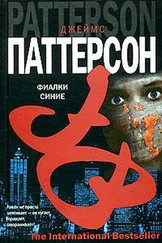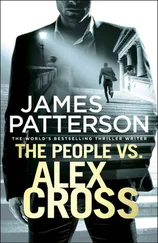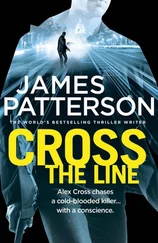Potter nodded to his wife and to the old woman, who’d begun to struggle now and show fear.
“Poor thing froze to death, right on her front porch,” Potter said, more to Mrs. Linney than to Mary. “Her son found her.”
They left Mrs. Linney like that, sitting there in her wheelchair, dead on her front porch, eyes open, with the gun in her lap and her oxygen line back in place. By the time they’d dropped the trailer, put the truck in the barn, and mounted the horses, the snow was already collecting on the quilts in the old woman’s lap.
They trotted out of the ranch yard, heading true north along the creek. The cold and the wind were beyond bitter. But they forged on. The snow and the gales would soon obliterate their tracks. And they hadn’t far to go.
Seven miles farther on, the Linney ranch road became a cattle trail that snaked another three miles to a gate in a barbed-wire fence cutting across a vast, empty, broken prairie.
Beyond the fence, they’d be in Saskatchewan.
Beyond the fence, the Potters would almost be home.
Out in the hangar at Joint Base Andrews, I called Bree back. She answered at the first ring.
“Read the file I just sent you,” she said, sounding breathless. “I’m positive he’s Senator Walker’s killer, and wait until you see who’s mentioned in there!”
“Who?”
“Read it.”
I told her I’d call her back, went to my workstation, and downloaded the file.
It turned out that Carl Thomas, the medical-equipment salesman from Pennsylvania, was actually Sean Patrick Lawlor, fifty-four, a former member of the British elite SAS counter-terror team. Lawlor was a long-range sniper who’d gone rogue during the first Gulf War and shot forty-one of Saddam Hussein’s palace guards as they retreated from Kuwait toward Iraq.
Lawlor was court-martialed for mass murder. The prosecutors said he had acted mercilessly in the killings of the retreating Iraqi forces. His defense argued that he’d been given no written orders of engagement beyond stopping any Iraqi soldiers from using the road, north or south.
The British military court decided that Lawlor’s judgment at shooting forty-one of the men may have been beyond the pale, but given the lack of clear orders and the fact that he had been in a war zone engaged in mortal combat with the enemy, he was not guilty of mass murder, or of murder in any way.
Lawlor’s superiors let him know, however, that he’d never again return to the field for Britain, and he was offered an honorable discharge. He took it.
Afterward, Lawlor was approached by MI6 agents to engage in contract work as a killer for hire. He did so for more than a decade, but then he became too expensive, and they severed their relationship with him.
At that point, in his early forties, Lawlor became a shooter for hire, rumored to have worked at times for Russian, Chinese, and North Korean interests.
I scrolled down the names with which Lawlor had been associated and recognized none until three-quarters of the way down the list.
“There he is!” I cried. I jumped up and pumped my fist.
I turned to find Mahoney and FBI deputy director Carstensen coming toward me.
“There who is?” Carstensen said.
“Viktor Kasimov,” I said, my heart still beating fast. “At least twice, Kasimov seems to have hired a man named Sean Lawlor, a former British SAS operator who assassinated Senator Walker at the beginning of all this.”
“Where did you come by all that?” Mahoney said.
“DC Metro chief of detectives Bree Stone,” I said to Carstensen. “My brilliant wife, who got it from Scotland Yard. I think Kasimov has disappeared for a reason. As in a Kremlin reason.”
I shared the file with Carstensen and Mahoney. While they read it, I called Bree back to congratulate her.
“This could be the big break we needed,” I said. “Everyone here knows that if we find Kasimov, we might find the other assassins.”
“Good,” she said, sounding pleased. “Do me a favor? Have whoever’s in charge there drop a line to Chief Michaels to that effect?”
“Done,” I said.
“I love you,” she said. “It’s been only a few hours, but I can’t wait to see you.”
“I can’t wait to hold you,” I said, and I flashed for a terrifying split second on that threat of a nuclear bomb going off before adding: “And the kids. And Nana.”
“Talk soon,” she said, and she cut the connection.
I walked back toward Mahoney and the deputy director, who were no longer reading Lawlor’s file but standing with their eyes on the big screens overhead.
Mahoney saw me and shook his head in disbelief. “As if this whole thing couldn’t get any crazier.”
Up on the screens, veteran NBC journalist and anchorman Lester Holt appeared doing a standup on the steps of the U.S. Senate.
“Is Samuel Larkin the legitimate president of the United States?” Holt asked. “Or, according to the arcane rules of Congress and presidential succession, should someone else be in the Oval Office with a finger on the cyber and nuclear buttons?”
The broadcaster asked us to recall that, prior to the attacks, the late President Hobbs had been in office less than two weeks and had not yet nominated a new vice president.
“That’s important to understand,” Holt said. “The president nominates his vice president, who must then be confirmed by two-thirds of both houses of Congress.”
The anchorman said this was different from the Speaker of the House, normally third in line to the presidency, in that the most powerful person in the House of Representatives had to be elected by the members of the majority party.
Like the vice president, members of the president’s cabinet, including the secretaries of treasury, state, and defense and the attorney general, were nominated to their posts by the president. The Senate had to confirm their nominations.
“We nominate and congressionally confirm a vice president,” Holt said, ticking off points on his gloved fingers. “We elect a Speaker. And we nominate and confirm cabinet members at the Senate.”
Holt started to walk up the Senate steps. “Only one position in the immediate order of succession to the Oval Office is automatic. The person fourth in line to the presidency, the Senate president pro tempore, is always the most senior member of the majority party. When that senator dies, the next in seniority automatically and immediately inherits the position and title.”
The scene jumped to inside the Senate, with Holt standing outside the chambers.
“In the chaos of the hours that have passed since the attacks, a single fact seems to have been forgotten, or perhaps ignored,” he said. “When the Senate president pro tempore, West Virginia senator Arthur Jones, had a heart attack and was pronounced dead, the next senator in line automatically and with zero fanfare became Senate president pro tempore.”
The anchorman paused for effect. “This all happened a good four hours before the assassinations. In light of this obscure but very real rule, should Samuel Larkin be running the country? Launching attacks against the power grids of other nations? Provoking nuclear war? Or should the new Senate president pro tempore — Bryce Talbot of Nevada — be president of the United States?”
The screen cut to show archival footage of Senator Talbot, a slick, smart, silver-haired former prosecutor from Reno in his late sixties. I knew Talbot, or knew of his reputation, anyway, and it made me slightly unsettled.
The senator from Nevada was one of the top fund-raisers on Capitol Hill, and he held the power of the purse strings as chairman of the Senate Appropriations Committee. Talbot was reputed to be in the back pocket of, among other special-interest groups, the gambling industry. Then again, what senator from Nevada wouldn’t be?
Читать дальше












